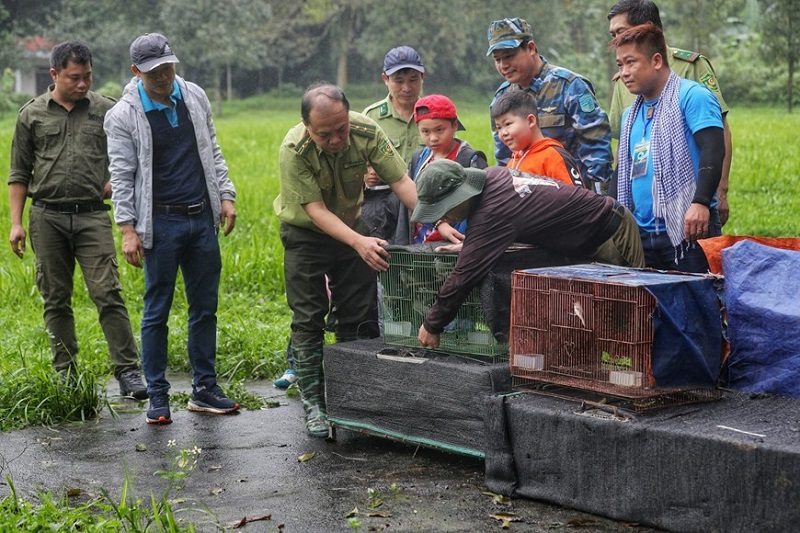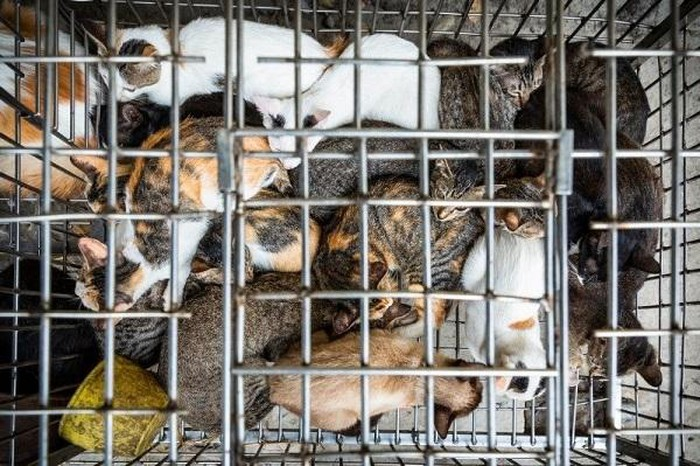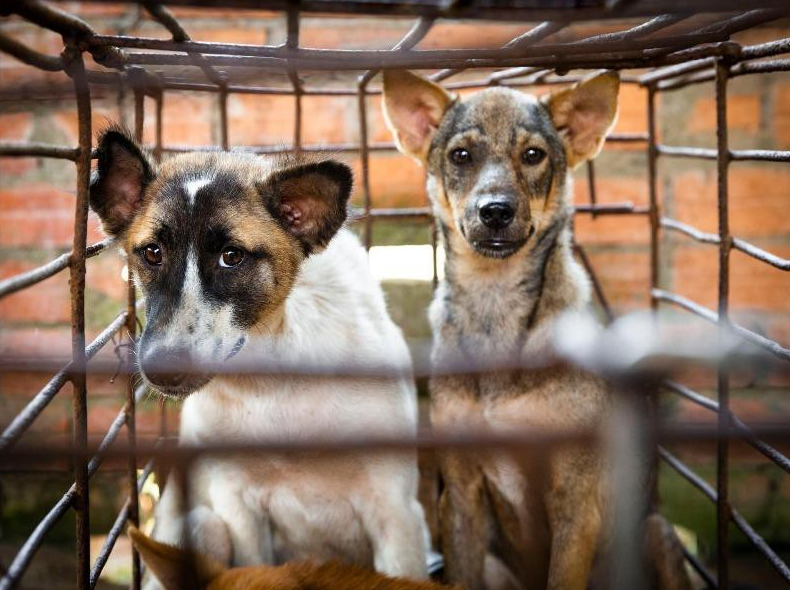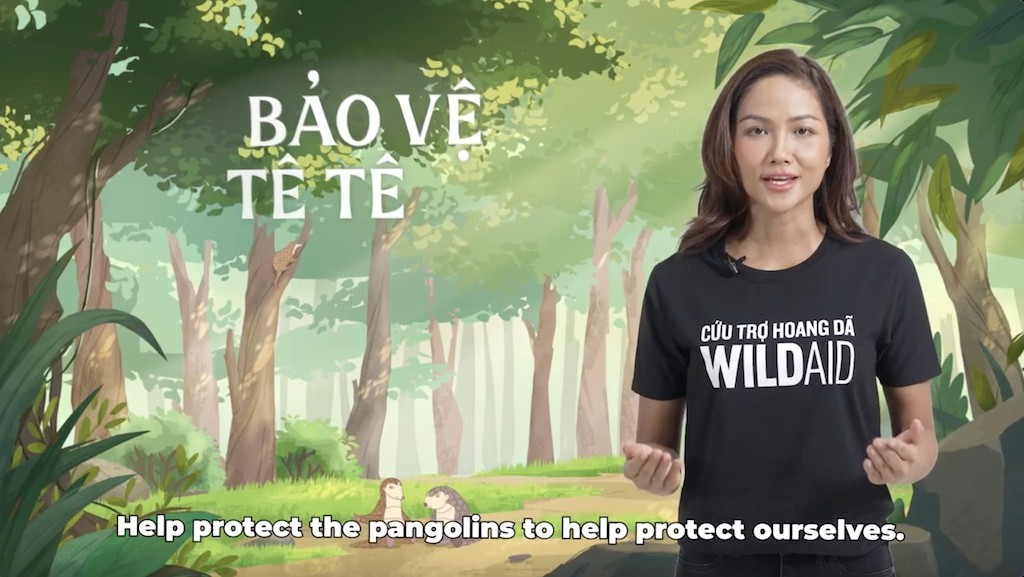Red-shanked douc - endangered animal released into Bach Ma National Park
| "Going Home" - Animal release debuts at Cuc Phuong National Park | |
| Four Paws: Journey to stop dogs and cats meat trade in Vietnam | |
| Cruelly torturing on pets in Vietnam will be fined US$ 130 |
Phan Hieu, a local resident in the central province's Huong Thuy Town found the primate near Ta Trach Lake and quickly contacted local forest rangers to take charge, according to VnExpress.
The forest area around the lake is not a suitable habitat for the red-shanked douc langur, so Huong Thuy Town's forest protection department decided to release the 6.3-kilogram primate into Bach Ma National Park.
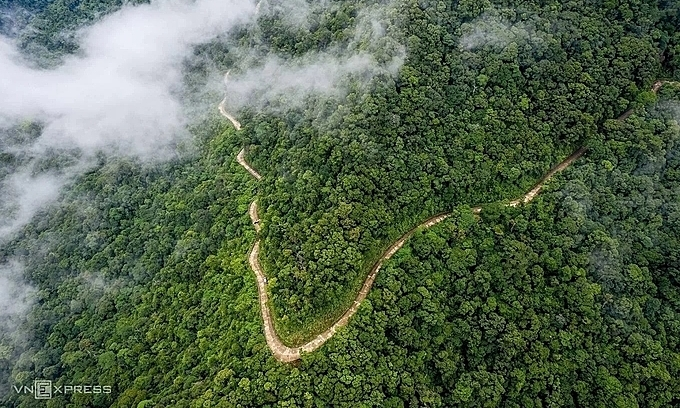 |
| Bach Ma National Park in Thua Thien Hue Province, central Vietnam. Photo: VnExpress/Kelvin Long. |
Nguyen Vu Linh, director of the park's management board, said the animal is in a good health. Park staff will keep a close watch on its movements and ability to integrate into red-shanked douc herds.
The red-shanked douc is a rare and endemic species in Vietnam. World Wildlife Fund (WWF) placed them on the list of animals in need of unconditional protection.
Spanning 37,500 hectares and covered by evergreen tropical and subtropical rainforests, Bach Ma National Park affords red-shanked doucs the ideal habitat within which to thrive.
 |
| Forest rangers take a red-shanked douc to Bach Ma National Park by car, May 5, 2021. Photo by VnExpress/Cong Bang. |
Researchers said the park harbors over 1,700 animal species, accounting for 7 percent of all species currently in Vietnam. A total 69 species are named in the Red List of Threatened Species, including dholes, leopards and saola. Fifteen species are endemic to Vietnam, mostly birds.
Bach Ma is also home to many deserted villas formerly used by colonial French officers and Hue’s upper-class families.
Red-Shanked Douc – Endangered animal in Vietnam
Geographic Range
This species is found in North Central Vietnam, Central and Southern Laos, and Northeastern Cambodia. The total population is unknown, however, the population in Laos is believed to be large and more stable than in Vietnam.
Habitat Ecology
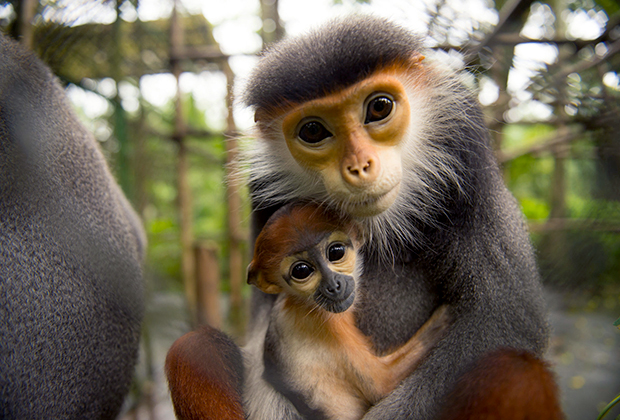 |
| Photo: EPRC |
Red-Shanked Douc Langurs occur in subtropical and tropical broadleaf evergreen or semi-deciduous forests and to a lesser extent in secondary evergreen and mixed bamboo forests. Diurnal and arboreal, they travel through the canopy feeding predominantly on leaves, but also eat fruits, flowers, buds, and bark. They mostly live in family groups of one single male and multi females, but regularly come together into larger groups of up to 50 animals in a fission-fusion association.
The Red-shanked douc, sometimes referred to as the ‘costumed ape’, is one of the most colourful primates. Its yellow face is flanked with a bright white beard and it appears as if it is wearing white gloves and orange stockings. Its face is almost doll-like, with a permanent serene expression. The douc – Vietnamese for ‘monkey’ and pronounced ‘dook’ – spends the majority of its life in tree canopies, eating mostly leaves. It is endemic to Southeast Asia and inhabits northern and central Vietnam, Laos and Cambodia.
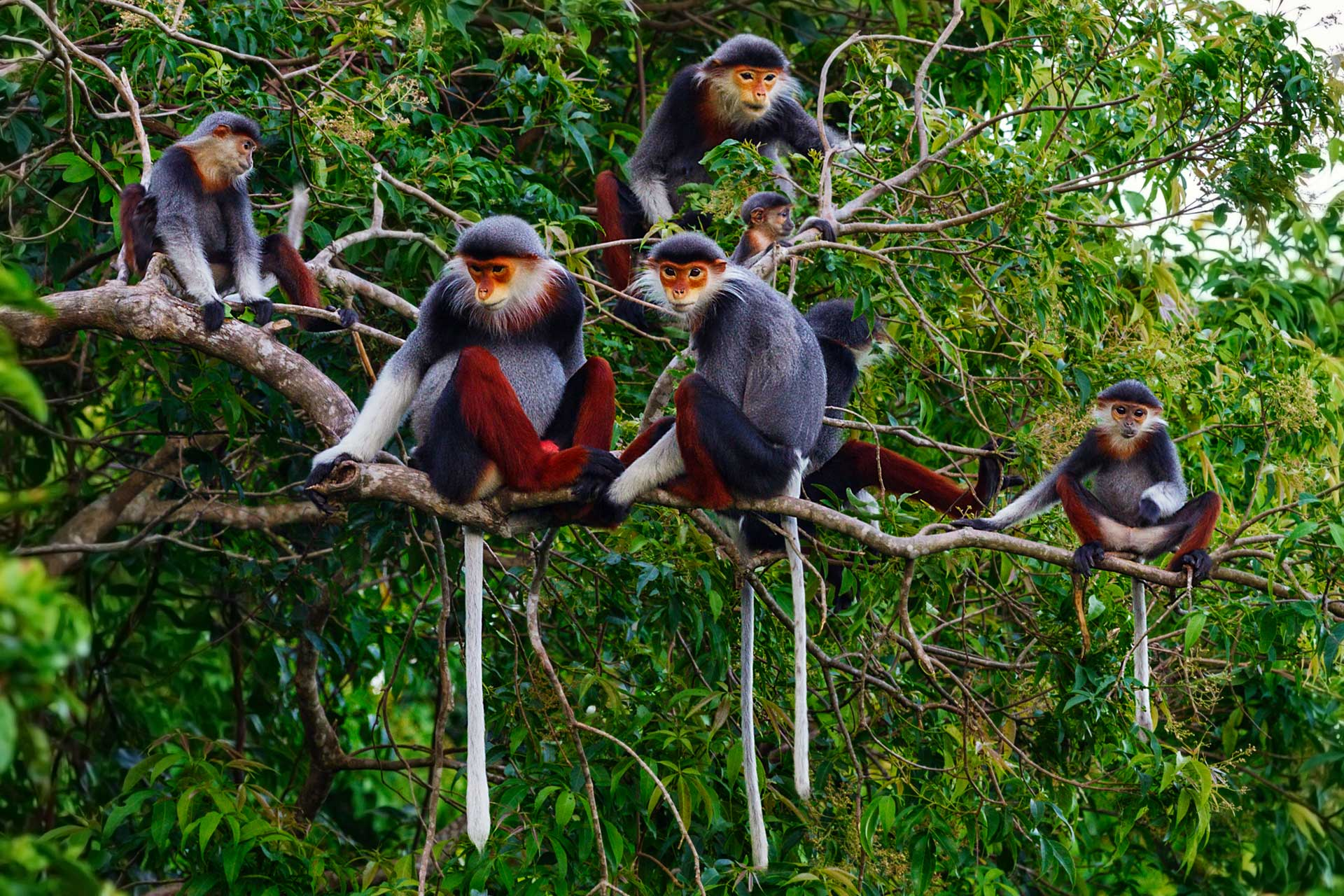 |
| Red-shanked Douc Langur protected by the Douc Langur Foundation in Vietnam by Tim Plowden |
The main threat to the douc is hunting by humans for both food and use in traditional medicines – it is known to freeze rather than flee when confronted, making it an easy target. Its appearance and rarity also mean that the Red-shanked douc has been heavily targeted by the illegal pet trade. There are laws in place to protect the species from hunting but they are poorly enforced throughout its range. Habitat loss is another contributing factor. Expanding human populations mean more forests are cleared for agriculture. These forests were already significantly damaged during the US-Vietnam War, sprayed with Agent Orange – there are also reports of soldiers using the doucs for target practice. In 2012, three Vietnamese soldiers admitted to torturing and killing two Gray-shanked doucs after they say they had bought from local citizens. They had posted images of their crime on Facebook. Education and raising awareness of the need for conservation of all doucs remain huge challenges.
P. nemaeus has been classified as endangered since 2000. While their numbers are decreasing, they have not yet been recognised as having a severely fragmented population. Much of the Red-shanked douc’s habitat now occurs on protected land but without proper enforcement the primate continues to face the risks of illegal hunting and trapping, which could ultimately bring it to extinction.
 | The Famous Islands Named After Animals In Vietnam Turtle Island and Monkey Island are blessed with magnificent natural beauty. Vietnam also has other two islands that are named after animals and have been ... |
 | Vietnam’s oldest zoo incurs $US 861,000 in loss due to Covid-19, calling for donation With the sharp decline in the number of visitors due to the COVID-19 pandemic, the 156-year-old Saigon Zoo has lost VND100 million (US$ 4,304) a ... |
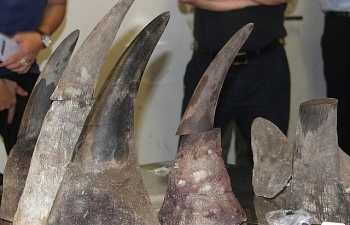 | Vietnam: Import procedures for wild animals suspended The General Department of Customs has issued a written request to provincial and municipal Customs Departments to direct subordinate customs branches to take measures to ... |
Recommended
 Handbook
Handbook
Vietnam Moves Up 8 Places In World Happiness Index
 Handbook
Handbook
Travelling Vietnam Through French Artist's Children Book
 Multimedia
Multimedia
Vietnamese Turmeric Fish among Best Asian Dishes: TasteAtlas
 Handbook
Handbook
From Lost to Found: German Tourist Thanks Vietnamese Police for Returning His Bag
 Handbook
Handbook
Prediction and Resolution for the Disasters of Humanity
 Handbook
Handbook
16 French Films To Be Shown For Free During Tet Holiday In Vietnam
 Handbook
Handbook
Unique Cultural and Religious Activities to Welcome Year of the Snake
 Handbook
Handbook

